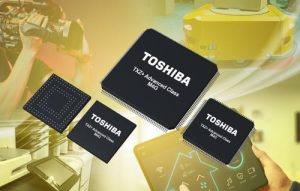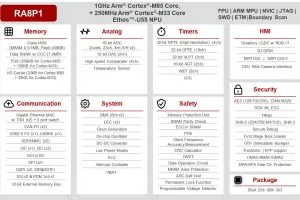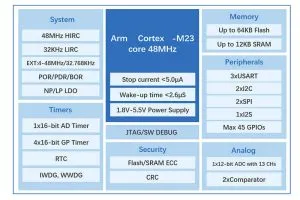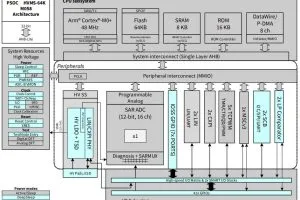
Made on a 40nm process, they are aimed at multi-function office printers, audio-video equipment, IoT, home appliances, building automation and factory automation.
All have a the Cortex-M4 with floating-point unit running at up to 200MHz alongside 512 to 2,048kbyte of flash for code and 32kbyte of data flash – the latter is rewritable during instruction execution, with 100k write cycle endurance. RAM is either 194 or 258kbyte. (Update: this article previously stated the wrong amount of code flash)
Among communication interfaces in the mix are quad-octal SPI, IS audio, UART, FUART, TSPI and I2C. “A three-unit DMAC and bus matrix structure significantly improves communication throughput when compared to conventional products,” said the company.
The 12bit ADC allows individual sample-and-hold times to be set for up to 24 input channels, and a programmable motor driver (‘A-PMD’) is suited to AC and brushless DC motors.
The self-diagnosis covers ROM, RAM, ADC and clock, to support IEC60730 Class B functional safety certification.
Documentation, sample software (with use examples) and driver software for each peripheral is available free from the company website, and evaluation boards and development environments are available.
Toshiba has provided this product link (now updated) which isolates the M4G group of the TXZA+ series.
This data sheet appears to cover all of the new parts and no more.
 Electronics Weekly
Electronics Weekly



